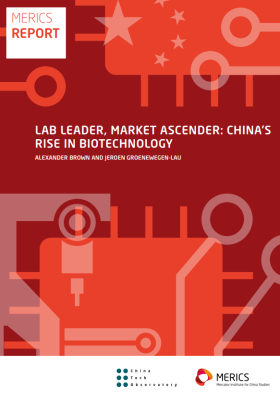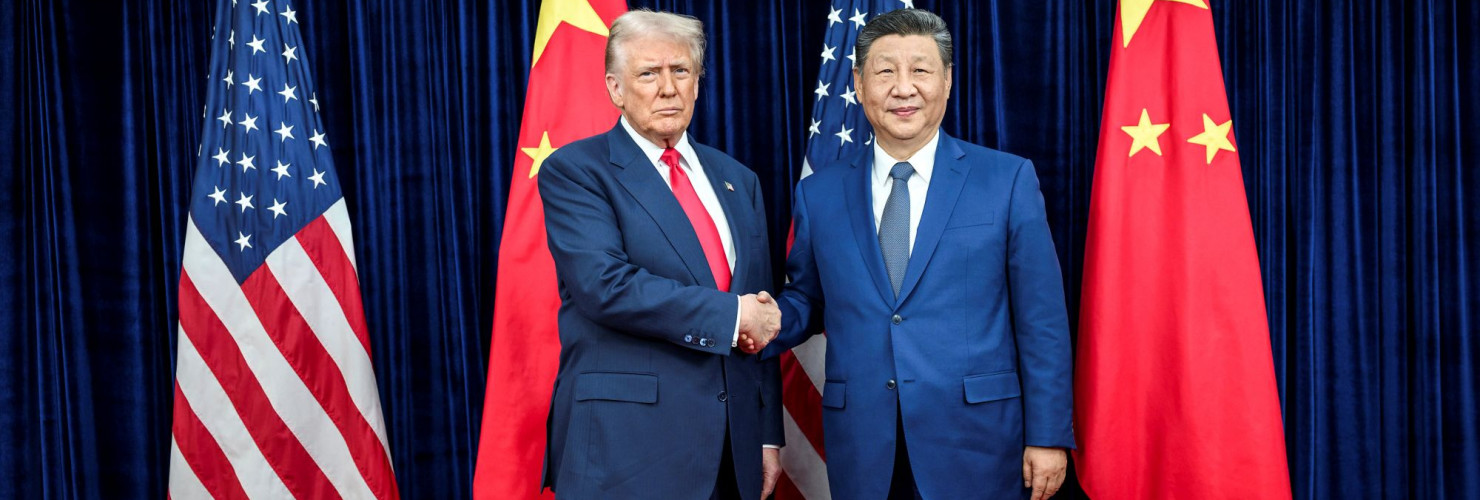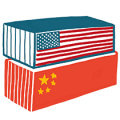

Art of the deal meets great power politics: Trump 2.0’s approach to China
The US president is prioritizing economic and technology concerns over any strategic China policy, says George Yin. Whether this will strengthen his hand remains to be seen.
With much anticipation, US President Donald Trump met with Chinese President Xi Jinping on the sidelines of the APEC Summit in Busan, South Korea, on October 30, 2025. After the meeting, Trump hailed it as a success, declaring, “On a scale of zero to ten, with ten being the best, I’d say the meeting was a twelve.” While observers may not share Trump’s optimistic assessment, the Busan meeting nonetheless marks the first real test of the new Trump administration’s approach to China: a transactional drive for quick solutions to pressing issues that happen to involve China, rather than a China strategy in the strict sense.
Under Trump administration 2.0, China experts are often excluded from major decisions and have limited knowledge of policy details – only in July, the State Department was reported to have sacked its top experts on the South China Sea. As a result, the White House’s approach to Trump’s meeting with Xi is likely to have been shaped by Trump-connected experts focused on nuts-and-bolts functional issues who are less specialized in China-related matters – for example, tariff policy towards China by the US president’s economic advisors, or technology policy involving Beijing by his tech advisors.
Trump regularly consults his cabinet on China – the private sector also wields considerable sway
Trump regularly consults his cabinet on China policy, particularly his top economic officials—Treasury Secretary Scott Bessent and Commerce Secretary Howard Lutnick. Bessent was reportedly appointed after convincing Trump that he could give “honest analysis of different policies and what [their] outcomes might be,” and Lutnick has a relationship with Trump that goes back at least three decades. US Trade Representative Jamieson Greer and White House Counselor Peter Navarro also exert influence, but Bessent and Lutnick are now more visibly at the forefront of policy discussions.
Importantly, Bessent and Lutnick—unlike first-term Trump officials such as Lighthizer — appear less committed to the idea of decoupling from China, a stance that Beijing welcomes. This could be a positive factor in facilitating US – China deal-making.
The private sector can also wield considerable sway on Trump’s China policy. Corporate leaders, especially those from the tech world and Wall Street, play a role in shaping decisions regarding China. Nvidia chief executive Jensen Huang, as well as certain hedge fund managers, have had input. Elon Musk was influential in the past and his fellow PayPal co-founder, Peter Thiel, is close to J. D. Vance.
Nonetheless, foreign policy advisers within the Trump administration also exert influence, notably Secretary of State Marco Rubio and Vice President J.D. Vance. Rubio is a long-time China hawk, while Vance — who has described China as “the biggest threat” to the United States — represents a more restrained orientation. Vance’s influence may shape China policy, particularly regarding any prospective US–China grand bargain involving Taiwan.
“Trump 2.0” China policy is most often driven by economic issues
On balance, the profile of top Trump advisors suggests that “Trump 2.0” China policy is most often driven by economic issues, including trade, and technology concerns. What is not clear is the extent to which the president weighs these different functional inputs systematically and coordinates inter-agency processes. What we know is that Trump considers himself his own top “China expert”. “I did great with China,” he said in an interview in early 2024 – and his China policy largely reflects his personal judgment. Fundamentally, Trump views China as a rival, particularly in the economic arena, accusing it of “raping the US through trade”. He has so far seemed much less concerned with issues such as human-rights abuses in China or Beijing’s saber-rattling towards the independent-minded Taiwan.
Notably, Trump prides himself on having the ability to secure favorable deals with China and expresses confidence in his personal understanding of and rapport with Xi as a leader. In the past few months, his tone on China has shifted from conflict to dealmaking, an implicit admission of China’s bargaining power after Beijing used rare earth minerals as leverage during US-China trade talks.
Experts and media are skeptical of the Trump administration’s approach to China
The personalized nature of Trump’s China decision-making and the proliferation of power centers may help explain why experts have grown skeptical of the Trump 2.0 administration’s approach to China. The conservative French newspaper Le Monde complained in August: the White House's China policy is completely incomprehensible. Even US analysts have criticized Trump’s China policy as incoherent and chaotic.”
We would expect Beijing to welcome—if not actively encourage—an “incoherent” and “issue-oriented” Trump China strategy if it proves ineffective. But this is not the case. Wu Xinbo, one of China’s leading experts on US-China relations, recently highlighted the importance for Trump to formulate a “China framework.” To properly manage US–China relations, Wu suggested, “it is necessary not only to address specific issues but also to establish an overarching framework — namely, to use a summit as an opportunity for both sides to reach a general understanding on the direction of bilateral relations, thereby enabling a more purposeful approach to issues such as trade, Taiwan, and the South China Sea and avoiding being hampered by any single issue.”
Wu’s comment raises the question of why China would want Trump to be more coherent. Beijing may be engaging in a classic great-power politics game of bargaining and issue linkage. Specifically, China appears to be leveraging economic issues — from rare earths to soybeans — to pressure the United States into making political concessions, for example, on Taiwan. Ultimately, as Wu notes, Beijing hopes that Washington will correct what it sees as a mistake in defining China as its “primary strategic rival” (shouyao zhanlue jingzheng duishou) and instead view the US–China relationship as one of “partners and competitors,” with “partnership” taking precedence. Xi’s words during the Busan meeting reflect precisely these sentiments. These ideas may sound benign, but in essence, they entail US acquiescence to the new status quo that China has sought to establish under Xi’s more assertive foreign policy.
Trump’s decision-making style — whether by design or not — may make him more resistant to Beijing’s strategy. This, however, is no substitute for the need for Trump to understand China’s strategic logic if he is to gain the upper hand with Xi in the next round of parleying. Beijing harbors clear designs to shape world politics in ways favorable to its national interests. An issue-oriented approach risks obscuring China’s broader ambitions and, in doing so, could lead Washington to underestimate the importance of its traditional allies — whose collective strength remains essential to containing Beijing’s advances.
The author is grateful to a number of anonymous interviewees, and to Thorsten Benner, Phillip Hsu, and Richard McGregor for valuable comments and suggestions. Any errors or omissions are the sole responsibility of the author.

